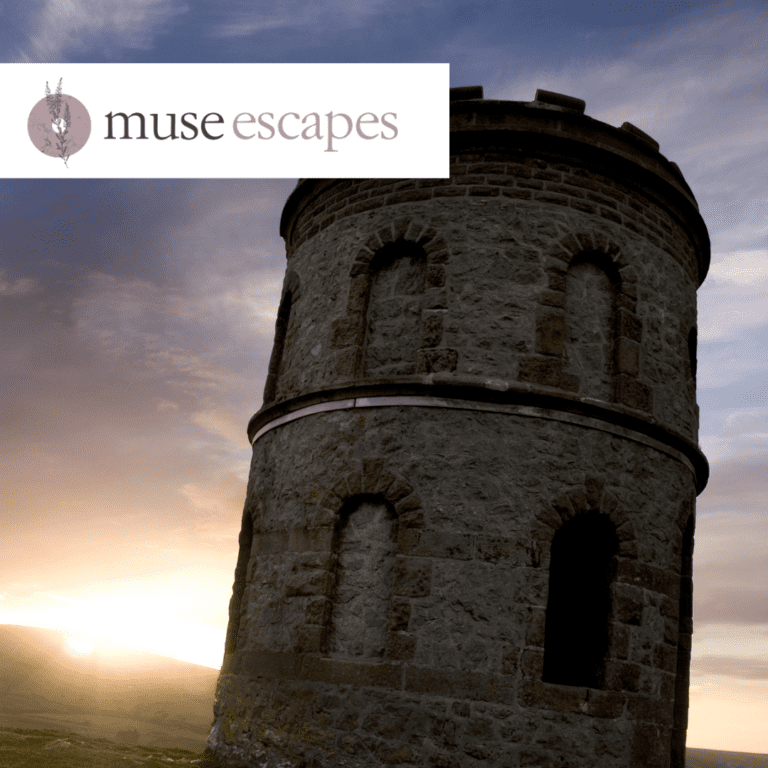History of Buxton
Discover what Buxton is famous for – from sacred Roman baths to Georgian grandeur, and why England’s highest town continues to captivate visitors after two millennia
What is Buxton Famous For? The Springs That Started It All
So, what is Buxton famous for? The answer begins with water – extraordinary water that started its journey 5,000 years ago, around the end of the last Ice Age, slowly filtering through the vast limestone network of the Peak District. This remarkable origin story explains why Buxton exists today and what has made this Derbyshire town so special throughout history.
But where is Buxton exactly? Located in the county of Derbyshire, England, this historic spa town sits proudly at over 1,000 feet above sea level, making Buxton the highest town in England. Is Buxton the highest town in England? Absolutely – this lofty distinction has shaped its character for centuries, where fresh mountain air mingles with the healing vapours of its legendary springs.
Deep beneath the elegant Georgian facade of the Buxton Crescent, this ancient water completes its millennia-long journey, emerging at St. Ann’s Spring at a perfectly constant temperature of 27.5°C (82°F). More than one million litres gush forth daily from the original source – this is where Buxton water comes from, and where does Buxton water come from exactly? The answer lies in this incredible 5,000-year filtration process through Peak District limestone. Does Buxton water come from Buxton? Yes, it originates from these very springs that created what the Romans reverently called Aquae Arnemetiae – “The Waters of the Goddess of the Grove.”
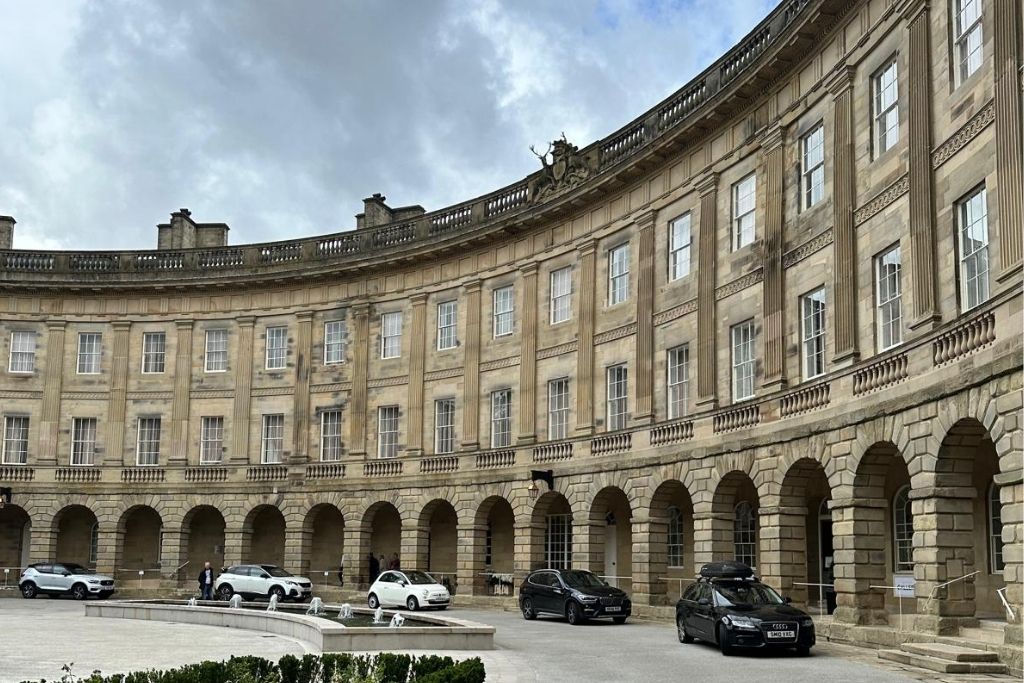
Standing as England’s highest town, Buxton UK has held this unique position throughout its long history. But what county is Buxton in? It’s located in Derbyshire, on the edge of the magnificent Peak District National Park, where this elevated position creates the perfect conditions for its famous thermal springs.
Roman Buxton: Where Gods and Healing Waters Met
How old is Buxton? The history of Buxton stretches back over 2,000 years to Roman times, when this elevated location first gained recognition as a sacred healing destination. The Romans weren’t just impressed by Buxton’s warm springs – they were deeply moved by them, establishing Roman Buxton as one of Britain’s most important thermal spa destinations.
Buxton Roman baths weren’t merely functional – they were sacred spaces. Archaeological excavations have revealed lead-lined baths and an extraordinary discovery: a hoard of 232 Roman coins spanning 300 years, along with bronze bracelets, all left as sacred offerings to Arnemetia, the Celtic goddess of the grove whom the Romans embraced into their own pantheon.
This wasn’t merely a place for a quick wash. Aquae Arnemetiae was one of only two Roman bath towns in Britain (the other being Bath), making Roman Buxton a destination of national importance. Connected to the Roman road network via Batham Gate, legionaries and officials would journey to this highest town in England not just for physical healing, but for spiritual renewal in waters they believed were blessed by the gods themselves.
The Romans understood something profound about these springs – they represented a meeting point between the earthly and the divine, a concept that would echo through every subsequent chapter of Buxton history.
Medieval Pilgrims and Royal Visitors
Even after the Romans departed, the memory of Buxton’s healing waters endured. During medieval times, St. Ann’s Well became a significant pilgrimage site, drawing the faithful who sought relief from ailments, particularly rheumatism. The very name “Buckestones,” first recorded in the 12th century, marked Buxton’s continued presence in history.
But it was the arrival of royal visitor Mary Queen of Scots that truly elevated Buxton’s reputation. Between 1573 and 1584, while imprisoned under the custody of George Talbot, the 6th Earl of Shrewsbury, Mary visited Buxton at least eight times, staying at the Old Hall Hotel in the specially constructed Talbot Tower.
Picture the scene: a captive queen, suffering from chronic rheumatism, finding solace in the same waters that had soothed Roman soldiers centuries before. Her presence, even as a prisoner, acted as a powerful 16th-century celebrity endorsement, drawing other notable figures to this relatively remote Derbyshire spa.
On her final visit in 1584, Mary inscribed these prophetic words on a window pane in Room 26: “Buxton, whose warm waters have made thy name famous, perchance I shall visit thee no more – Farewell.” She never returned, but her legacy helped cement Buxton’s reputation as a destination worthy of royalty.
Georgian Grandeur: The Duke’s Vision Realized
The transformation that would define Buxton’s character forever began with William Cavendish, the 5th Duke of Devonshire, and his extraordinarily ambitious vision. Using profits from his copper mines, the Duke embarked on what can only be described as an 18th-century act of “place-making” – deliberately reshaping Buxton’s destiny to rival the elegance and popularity of Bath.
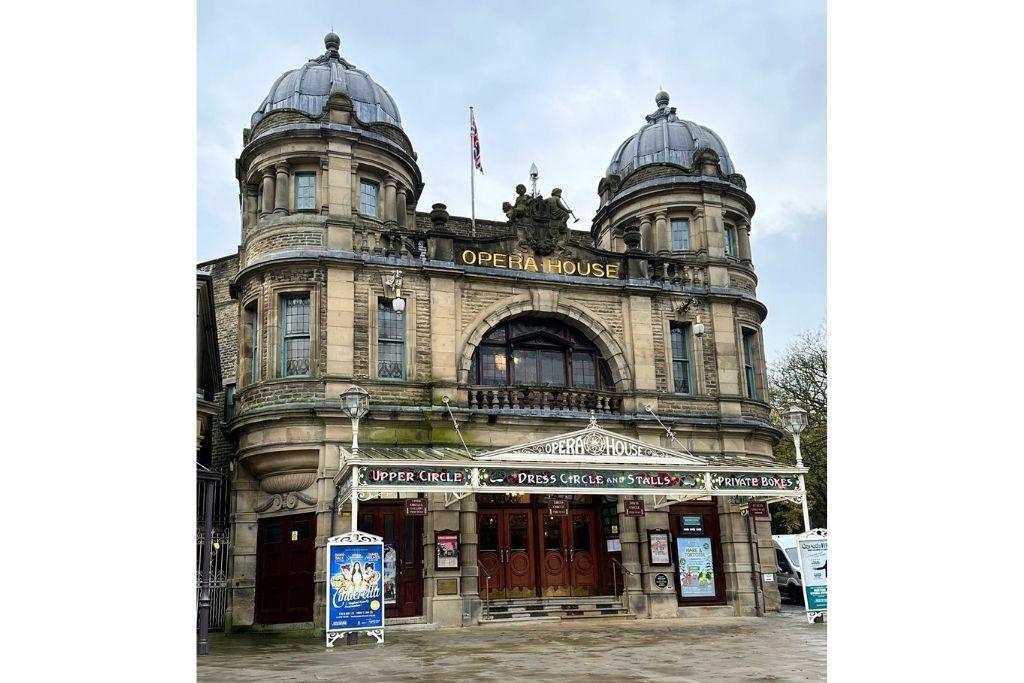
The Crown Jewel: The Buxton Crescent History
Between 1780 and 1784, architect John Carr of York brought the Duke’s vision to magnificent life with The Buxton Crescent. The Buxton Crescent history began with this Grade I listed masterpiece, with its elegant Doric colonnades, explicitly modeled after Bath’s Royal Crescent – a clear statement that this highest town in England had arrived on the national stage.
The Crescent wasn’t just beautiful; it was brilliantly functional. It incorporated a grand hotel, sophisticated townhouses, and an opulent assembly room that quickly became the social nucleus of Georgian Buxton. Rumours of private entrances connecting the hotel directly to the thermal baths only added to its allure, drawing distinguished visitors from across the country.
The Duke’s plan worked spectacularly. The assembly room became the beating heart of fashionable society, where the wealthy and influential gathered to see and be seen, all while taking advantage of the therapeutic waters that had drawn people to Buxton for millennia.
Victorian Innovation: Railways and Democratization
The arrival of the railway in 1863 marked another pivotal moment in Buxton’s evolution. Suddenly, this mountaintop spa was accessible not just to the determined elite, but to a broader public eager to experience its renowned healing waters.
The impact was immediate and dramatic. Buxton’s population surged from approximately 1,800 in 1861 to over 6,000 by 1881. This influx spurred remarkable developments that further established what Buxton is famous for:
- The Thermal Baths and Natural Mineral Baths, designed by Henry Currey in the 1850s, offered sophisticated Buxton baths experiences
- The Palace Hotel (1868) became an instant icon – The Palace Hotel Buxton history includes dominating the skyline with its grand architecture above the railway station
- The Devonshire Dome, originally the Great Stables, was crowned with what was then the world’s largest unsupported dome in 1880, now home to the Devonshire Spa Buxton
- The Pavilion Gardens (1871) provided elegant public spaces for leisure and recreation in this elevated Buxton town
The Victorian era also brought scientific credibility to Buxton’s waters. Sir Charles Scudamore’s chemical analysis in the 1820s highlighted their effectiveness in treating conditions like gout, lending medical authority to centuries of folk wisdom.
Trials and Triumphant Return
Like many grand Victorian enterprises, the 20th century brought challenges. The Crescent, once the pride of Georgian England, eventually became too costly to maintain and was sold to the local council in 1993. For years, this architectural treasure awaited its next chapter.
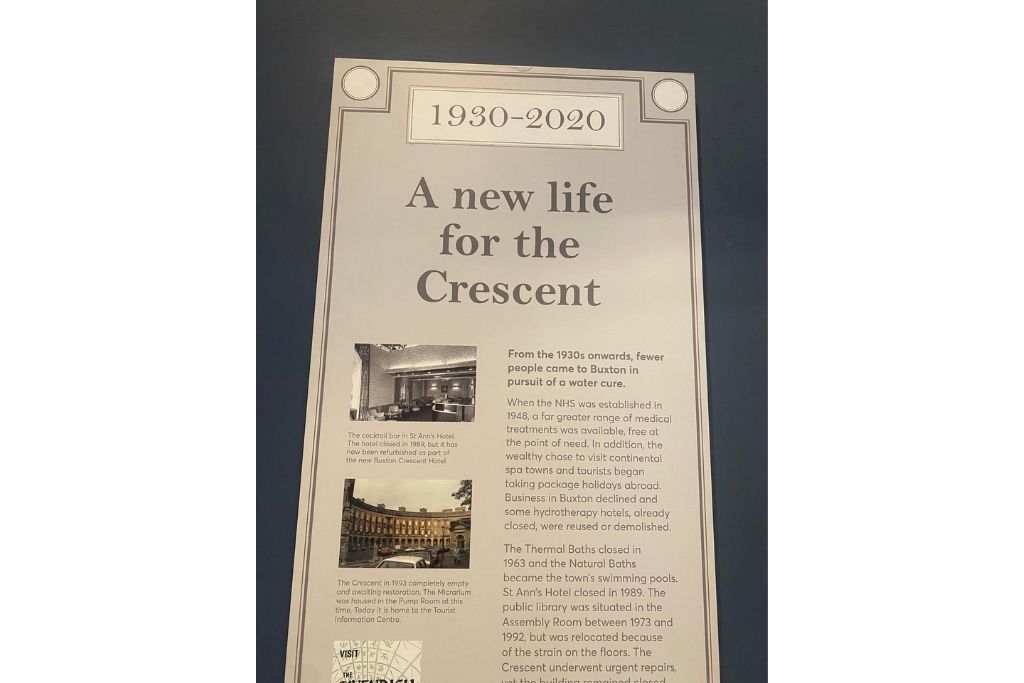
But Buxton England’s story is ultimately one of resilience and renewal. After meticulous restoration and despite setbacks involving investors, water rights, funding, and even COVID, the Crescent triumphantly reopened in October 2020 as the Ensana Buxton Crescent, a 5-star luxury hotel and spa in Buxton.
Today, guests can once again experience the thermal waters in magnificent Georgian surroundings, complete with thermal pools fed by St. Ann’s Well, bio-thermal saunas, CO2 mineral baths, and treatments that honor both ancient wisdom and modern wellness science. This is what makes Buxton famous for – the seamless blend of ancient healing traditions with contemporary luxury.
Buxton Today: Where Ancient Waters Meet Modern Luxury
Modern Buxton seamlessly blends its rich heritage with contemporary offerings, maintaining its status as England’s premier spa town. The town hosts the prestigious annual Buxton Festival, an internationally renowned opera and arts event, while the historic Buxton Opera House – the highest theatre in Britain – presents year-round cultural programming.
Beyond being a historic spa town, Buxton offers remarkable natural attractions that showcase why this Buxton city continues to attract visitors:
- Poole’s Cavern, a spectacular two-million-year-old limestone cave system with unique “poached egg” stalagmites
- Solomon’s Temple, a Victorian folly offering panoramic views – Solomon’s Temple Buxton history includes its construction in 1896 atop a Bronze Age burial mound
- Direct access to Peak District hiking trails and mountain biking trails, including walks to these landmarks right from your doorstep
What is Buxton? Key Facts at a Glance:
- Where is Buxton in England: High Peak, Derbyshire, on the edge of Peak District National Park
- Roman Name: Aquae Arnemetiae (“Waters of the Goddess of the Grove”)
- Elevation: 1,000+ feet – Buxton highest town in England
- Buxton famous for: 5,000-year-old thermal springs, Georgian Crescent, royal connections, Roman heritage
- Buxton population: 20,048 (2021 census)
- What county is Buxton in: Derbyshire
- Buxton water origin: Ancient springs with 5,000-year filtration journey
Is Buxton Worth Visiting? Experience Buxton’s Magic from Foxlow Grange
Is Buxton worth visiting? Absolutely! At Muse Escapes, we believe there’s no better way to experience what Buxton is famous for than from our luxury base at Foxlow Grange. Located just minutes from this historic spa town centre, our beautifully restored property offers eight individually designed luxury apartments, each reflecting the same attention to detail and passion for excellence that has defined Buxton throughout its storied past.
Whether you’re drawn by the healing springs that captivated Roman soldiers, the Georgian elegance that enchanted high society, or the Victorian innovation that opened Buxton England to the world, you’ll find yourself perfectly positioned to explore every facet of this remarkable town’s heritage.
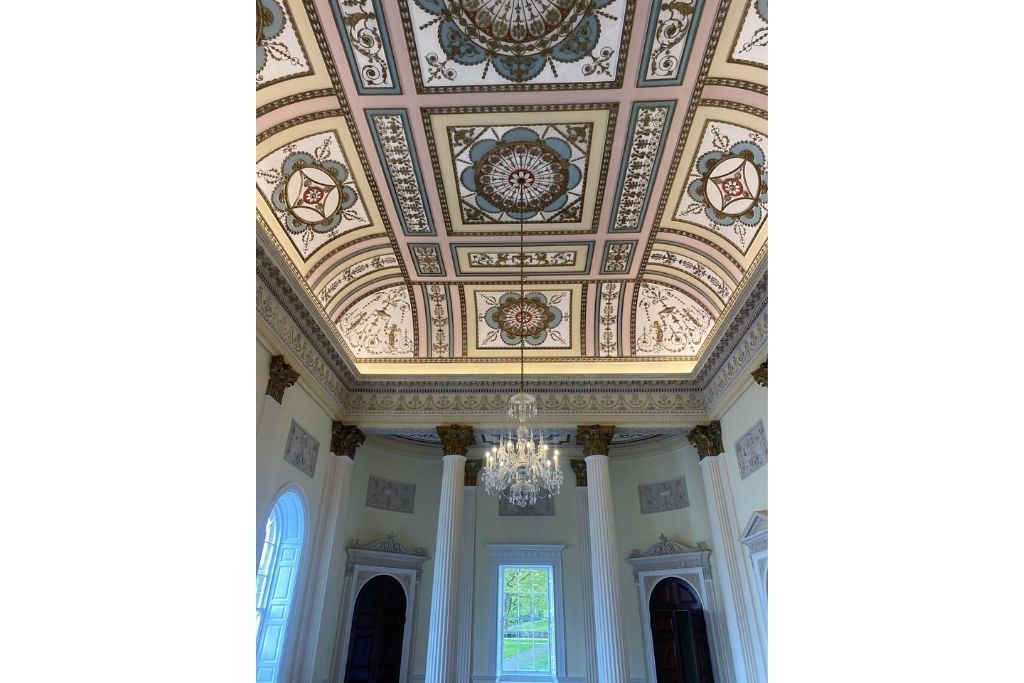
From our doorstep, you can walk directly to Solomon’s Temple and Poole’s Cavern, soak in the restored thermal baths of the Crescent, catch a world-class performance at the Opera House, or simply wander the elegant streets where Mary Queen of Scots once sought solace and Georgian society once sparkled. This is where is Buxton at its most magical – where history lives and breathes in every corner.
Ready to Write Your Own Chapter in Buxton History?
The history of Buxton continues to unfold, and we invite you to become part of it. Book your stay at Foxlow Grange and discover why this extraordinary highest town in England has been captivating visitors for over two millennia. Experience the same healing waters, walk the same elegant streets, and create your own memories in a place where Buxton UK’s incredible heritage comes alive.
Ready to experience the magic of Buxton? Book your historic getaway today, or contact our Guest Services team at 0114 489 3773 or info@museescapes.com to plan your perfect Peak District escape.
That’s all for now…
We will keep bringing you lots of information about the Peak District. As well as things to do, our fantastic properties and of course we will keep you up to date with Muse Escapes ventures!
If you want to book your stay with us, take a look here. Or if you have any questions, just message us here.
Take a look at our amazing luxury holiday let properties here.
Speak soon

